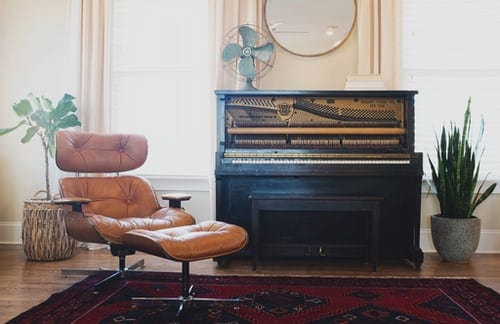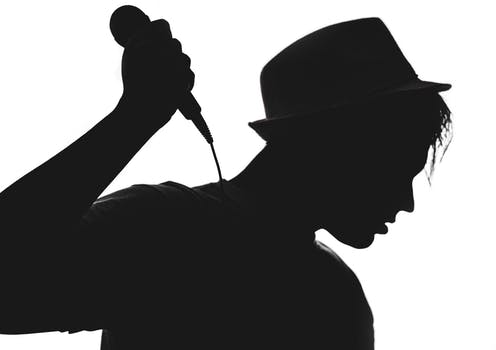Do you have an old piano that could use a makeover?
Do you wish you could repaint the instrument to give it a fresh look?
While many people think the idea is exciting and fun, there is one first question that keeps them from going through with it, “Does painting a piano change its sound?”
Every piano owner has come across the rumor that you mess with its sound if you paint the instrument.
But is the word true, or is it just a myth?
Today, we will talk about whether painting pianos impacts the instrument’s sound and everything else relevant!
Should You Paint A Piano?

Despite all the negative things you might have heard about it, there are several reasons why you should paint your piano.
First of all, your instrument grows old with time and deserves a makeover.
After looking at and playing the same rusty, wooden instrument for years, sometimes, you also need a change.
Painting your piano can give it a fresh look and motivate you to play.
Furthermore, restoring an old piano is not an easy job.
Apart from the stress of finding the right professionals, the restoration of these machines also takes lots of finance.
All this effort and money to restore an old piano is enough for you to buy a whole new one.
Thus, painting the instrument is a much easier, quicker solution.
Does Painting A Piano Change The Sound?
Think about it like this: unless you are touching areas that directly create sound, why would paint make any alterations to how the instrument plays?
So, if you stay away from the soundboard, there won’t be much difference in sound quality.
Even if there is any, it won’t be enough for you to notice.
However, there are a few things you should take care of.
Make sure you don’t paint the piano while it’s closed.
Many people make this mistake because they’re trying a shortcut to get everything done in one go.
As smart as that sounds, it is not such a good idea.
Avoid painting pianos in one piece because you’ll paint them shut.
When you try to open the lid later, you’ll have a tough time tuning it.
Instead, paint the instrument step by step, piece by piece.
Some Other FAQs About Painting A Piano
What Type Of Paint Can You Use On Piano?
Painting a piano isn’t a tricky or complicated job.
However, sometimes, you need to be a little particular about the kind of paint you use.
Experts and manufacturers recommend using high gloss paint.
It gives a nice finish to the wood and maintains the classiness of the piano.
If you plan to do it yourself and don’t have a lot of experience, gloss paint can be tricky to control.
Thus, try acrylic latex paint with a satin finish.
Afterward, you can use a glossy protective coating over the paint and seal the deal!
Can You Paint Your Piano Yourself?
Absolutely!
You can paint your piano at home if you don’t want to hire a professional for it.
Some people don’t want to spend the extra money, not to forget the discomfort associated with a stranger’s entry inside the house.
So, if you’re going to paint your piano yourself, here’s how you can do it:
- Gather the supplies first. Here’s what you’ll need: a painter’s tape, sander or sandpaper, primer, cloth, craft paper, brushes, a protective coating, and paint (obviously!)
- Start taping the craft paper to cover all the crucial spaces that shouldn’t be exposed to dust or paint. These areas include the piano keys, the top’s inner side, the foot pedals, and the music desk’s metal hardware.
- Start sanding the piano to give the paint a better place to adhere and create a smooth finish.
- Dust of all the mess after the sanding process.
- Prime the piano and let it dry.
- Sand once again and then prime again.
- Now, paint!
Tip: Every time you paint the piano, wait for the paint to dry, and then sand lightly.
Then apply another two or three coats on top.
Doing this gives a much brighter, truer solid color.
- Apply two or three protective coats. Don’t sand between these coats.
- About the piano to completely dry before you start or use it. Then, the craft paper and tape, and that’s it! Your new, fresh piano is all ready!
Can You Paint An Electric Piano?
Painting digital pianos is also a thing, believe it or not.
Indeed, it requires a little more care and precision.
But once you get it done, your electric piano will get a complete makeover for a surprisingly low cost.
The process involves removing all the buttons, dials, and knobs.
Then, start loosening and removing all the screws.
Pull the outer casing apart and unhook all the wires.
Next, pull all the hardware out and apply the primer.
Once it’s dry, apply the paint and then the lacquer.
Reassemble the keyboard parts back in their places and enjoy your freshly painted, transformed digital piano!
However, know that you will violate the manufacturer’s warranty terms if you paint the keyboard.
It means that once you’ve painted the instrument, you can no longer avail the facility of a warranty.
So, keep that in mind.
How Much Would It Cost To Paint A Piano?
On average, refinishing an old piano can cost you a minimum of $2,400 to $7,500.
This cost depends on the piano type, its condition, location, and several other factors.
Conclusion
All in all, painting a piano does not affect its sound at all.
Instead, it gives your old piano a brand new look and might give it a few more years of life and use!
It does take quite some effort and time to do it yourself.
However, if you don’t want to get a new one or spend hundreds of dollars to get it professionally refinished, a DIY paint job is the best way to do it at home, all by yourself.
The process is mentioned above, and you can get whatever color your heart desires!



